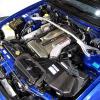Jap Tyres And Compliance...
Announcements
-
Similar Content
-
Latest Posts
-
Big drive from the west to Seaford. Good luck man, let us know how it all goes.
-
By DraftySquash · Posted
It’s Shane at CMS performance doing the tune. CMS performance was the only place in VIC I could find that would supply, install and tune (and had good feedback) Yeah that might be a good idea 😂 Less chances of fkn it up -
Who's doing your Nistune install and tune? Could always ask them to install the MBC.
-
The ECU doesn't care if the solenoid isn't there. There's no sensing/feedback from the solenoid. The ECU just gives it power, or not. Make sure that you Nistune tuner knows damn well how to tune a Neo. They suck. You have to take a lot of care to override bullshit to do with the boost sensor and a few other things to stop them being a dick.







Recommended Posts